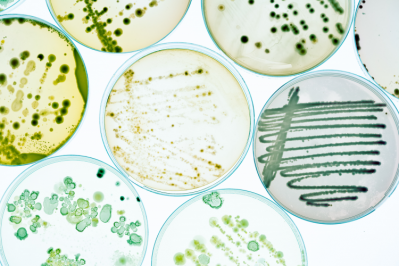‘We are in the middle of a food safety technological revolution’: Tetra Pak talks the future of food safety

Food safety is an important concern for consumers. Research conducted by the European Food Safety Authority (ESFA) earlier this year found it is one of the primary issues informing purchase decisions. The survey found it was the third most common consideration when buying food, behind origin and cost but ahead of taste.
Alex Bromage, a food safety and quality expert at Tetra Pak, believes that the importance of food safety has been amplified by the coronavirus crisis. COVID-19, he suggested, has brought with it fresh food safety challenges to the sector.
“The pandemic has irrevocably changed the way we view food safety and so F&B businesses of all sizes must now reassure their customers more than ever before,” he told this publication.
“This has led to a strain on our customers who are seeing pressure in their essential worker workforce as they try to meet the high demands of the food supply chain and ensure stores keep their shelves stocked. This presents a challenge to staff availability, as our customers rely on highly trained, capable individuals for equipment operation, quality checks and fulfilling important regulatory steps whilst keeping product moving to stores. They must take extra precautions inside their facility and ensure that there is plenty of capable cover for key food safety positions.”
Shifting expectations around food safety come in the context of a global increase in retailer and consumer demands on food safety, quality and transparency, he continued. “As consumers become more educated about their food, they are seeking greater assurance from brands that what they are consuming is what they expect. Whilst this challenge has existed for some time, it is no longer in the periphery and is fully in the mainstream of consumer behaviour.”
Reputational risk
With greater awareness around food safety comes greater reputational risk when things go wrong. “A heightened risk of product recall could have serious brand value and commercial consequences for producers. Avoiding such risks are paramount to keeping food supplies flowing and a company’s reputation intact,” Bromage observed.
The impact of ‘not stepping up’ in an evolving consumer landscape is already evident, he contended. “For example, as retailers begin to stock more diverse brands in any given category, smaller brands with distinct consumer-oriented branding in provenance, quality and transparency are given preference over incumbent brands. While each business is unique and the key food safety roles for each producer differs, established producers will have to invest in the roles that are emerging.
“This will inevitably lead to a direct financial impact, however, the consequences of not adapting are a lot higher and could cost an established producer significantly more. Simply put, if these demands are not addressed, new brands that are willing to take action will emerge in the market and start to erode market share.”
The ‘new frontier’ of food safety
Innovative tech-based solutions are rapidly emerging to meet these new challenges.
“We are in the middle of a technological revolution when it comes to food safety. We are seeing smart technologies that not only solve the food safety problems of today but can also predict the food safety challenges in a rapidly changing world,” Bromage explained.
What emerging technologies does he believe are particularly interesting?
“One that I am particularly excited about is DNA sequencing, which provides the possibility for traceability and rapid testing for food safety that we don’t have today,” the food safety expert responded.
“DNA sequencing technology is maturing so that it might be able to be used economically in the manufacturing process. Potentially, it could be a revolutionary technology for the food safety industry and make it easier for producers to be proactive rather than reactive.”
Elsewhere, Bromage says he is seeing ‘exciting and experimental work’ being done on new testing platforms that, if ultimately integrated into manufacturing systems, could offer ‘significant’ gains in terms of testing time and accuracy.
“Whether DNA or microbiology based, these new technologies are pushing food safety into a new frontier.”
Disrupting the food safety market
The rapid pace of development could potentially disrupt the existing food safety market. Bromage believes that the greatest potential for disruption lies in machine learning and artificial intelligence.
“It might seem to be somewhat cliché at this point, but I believe that the largest disruptive potential for food safety comes from AI. When I say AI, I am referring to the capability to monitor in real time and predict production outcomes from food producing facilities, allowing F&B producers to take a fresh and more sophisticated approach to their operations.”
But there are still a number of barriers before the machines take control. “For AI to become useful there are still many steps that need to be undertaken in the infrastructure of the data in production facilities. A key enabler for this will be adopting real time multivariate sensing technology into the production processes themselves,” Bromage observed.
“There are the obvious questions about regulation and validation of such systems, but regulators are taking a very positive view to the potential of this technology and all stakeholders are coming to realise that the data shared from machines are in many ways more reliable and accurate than paper records.”
Nevertheless, he concluded: “The biggest opportunities for food safety innovation start with real time multivariate sensing in processes and the innovators who are able to provide this with integration up to the data decision-making level.”



















